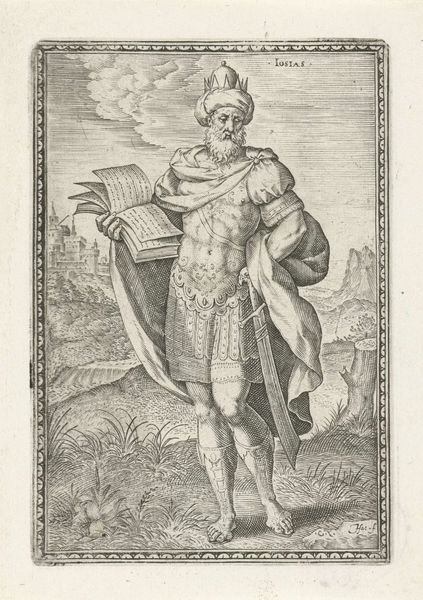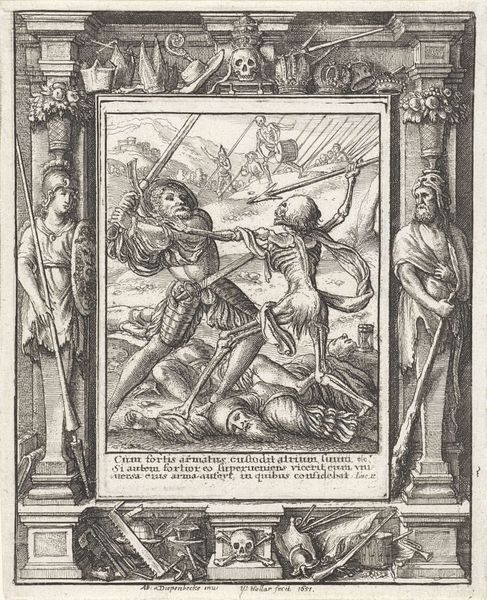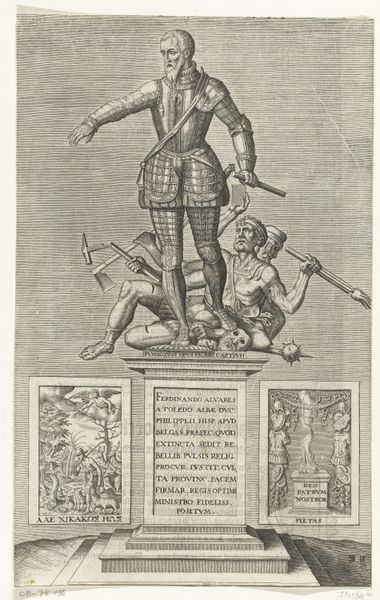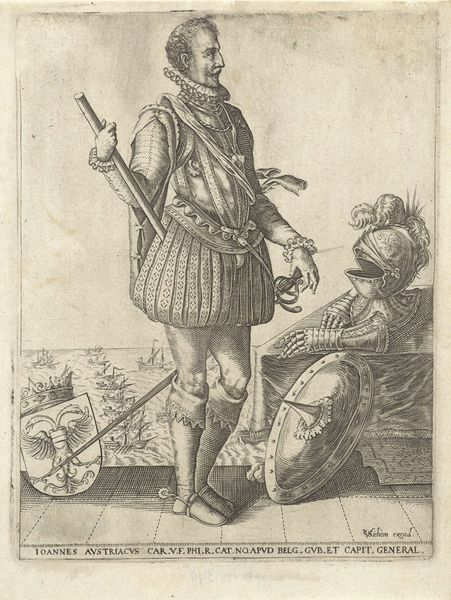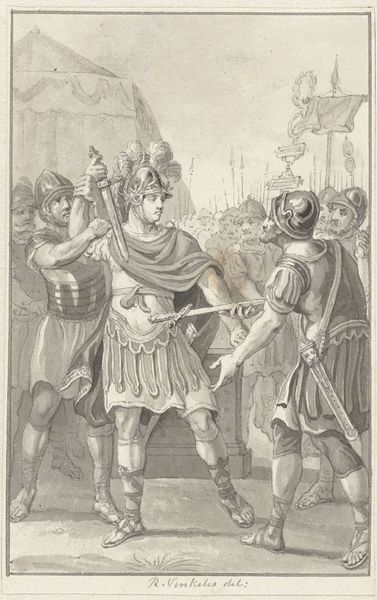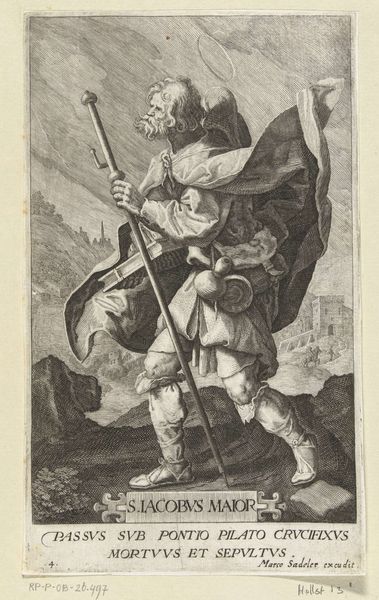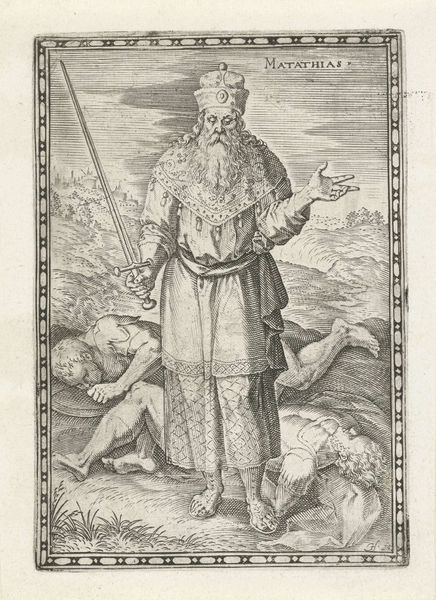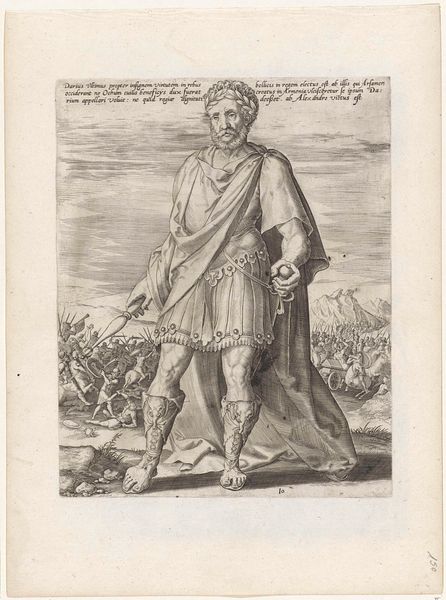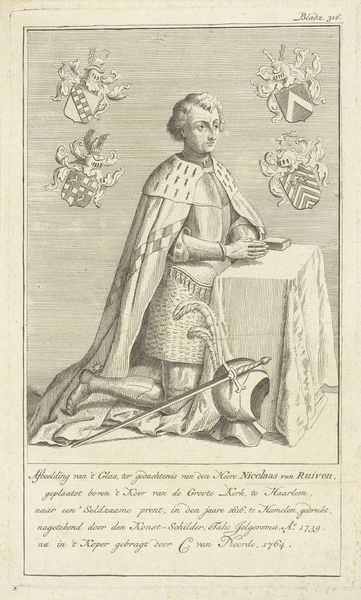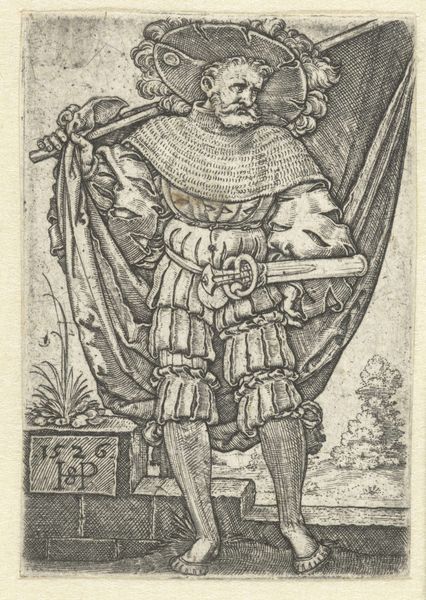
print, engraving
#
portrait
#
narrative-art
# print
#
pen illustration
#
mannerism
#
figuration
#
line
#
history-painting
#
engraving
Dimensions: height 115 mm, width 79 mm
Copyright: Rijks Museum: Open Domain
Editor: So, this is Johann Sadeler’s “Judas Maccabeus” from 1575, an engraving over here at the Rijksmuseum. There’s this real tension between the detailed foreground and the almost chaotic battle scene in the background. How would you interpret the scene? Curator: That contrast you point out is really key to understanding Mannerist prints like this. Think about the politics of imagery at the time. These weren't just illustrations; they were powerful statements about leadership and virtue, often linked to specific social or religious contexts. Sadeler’s portrayal presents Judas as a strong, almost idealized figure against a backdrop of war. Editor: An idealized figure even in the middle of battle? Is it designed to project strength to potential patrons or even political allies? Curator: Exactly. Prints circulated widely, shaping public perception. Consider who might have commissioned or collected this piece. It could have been a nobleman, or a religious leader wanting to project an image of strength and righteousness in times of conflict. The inclusion of specific symbols, like the lion on his shield, might allude to qualities they admired. Editor: So the lion might be about power or courage, right? And what about the lines themselves, are they common in artwork produced during this time? Curator: Line engraving was popular at this time because it allowed for mass production. It democratized art in some ways, making imagery accessible to a wider audience, even though the market was controlled. This print enters a dialogue about what it means to be a leader, particularly in a time of religious upheaval and reformation across Europe. Do you notice the tiny landscape in the background? Editor: Now that you mention it, it does give scale and depth. Curator: These images had the role of influencing thinking about moral and political concepts that persist today. That intersection between art and public identity, in my opinion, gives it value today. Editor: I’m now looking at it in a different way than at first, so thank you.
Comments
No comments
Be the first to comment and join the conversation on the ultimate creative platform.
